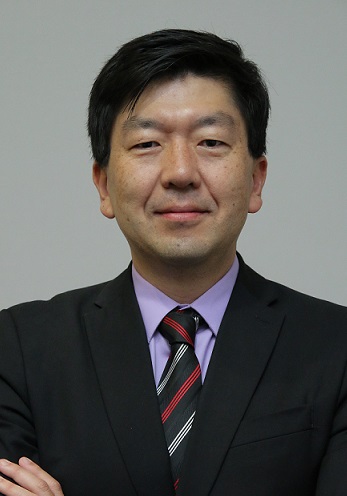Creating a parallel universe to better understand the real world sounds like a good idea. Especially if we are talking about corporate environments where simulations and tests allow significant savings in production chains and help to maximize the possibilities of materials and structures providing creative and innovative advances that are both safe and controllable.
The rise of virtual environments was limited by computer screens, VR, AR and MR reality glasses that allowed us to interact in simulated environments with a poor and limited result.
Another important element was its isolation. Digital models of buildings, structures and other simulations are not interconnected and do not share data in real time. With advances in networks, processing and Artificial Intelligence, this is changing today and will improve soon.
Preparing the company for the Metaverses
Gartner defines the Metaverse as an open and collective virtual space, created by converging physical reality, optimized virtually and digital reality. It has physical permanence and provides amplified immersive experiences.
Gartner estimates that by 2026, 25% of people will spend at least one hour a day in the Metaverse, whether for work, shopping, education, social media or entertainment.
The Metaverse of Latin America
A consistent market, resilient and innovative companies and proactive regulation are elements that Latin America needs to positively combine to take advantage of this new trend that will radically change the way we produce, work, study and entertain ourselves.
The business opportunities cover all production scenarios: Security and defense, transportation and logistics, health, education, entertainment, manufacturing and tourism.
The IT sectors must plan from now on what their strategies should be and analyze the different areas to take advantage of technological evolution for the benefit of employees and customers.

Juan Carlos Garces, CEO, Intel Colombia
The world is undergoing one of the greatest transformations ever seen in the history of technology with the rise of the Metaverse, which promises to enable real-time, globally interconnected virtual and Augmented Reality environments to allow billions of people to work, play, collaborate and engage in entirely new ways.
The goal of the Metaverse is to replicate what we usually do in the real world but in a 100% digital way. That means that instead of just seeing what happens on the device screens, users will interact with each other, with objects and environments from the screen.
In the corporate world, this technology will make it possible to create immersive learning spaces in which employees can interact with each other and execute projects through practical simulations. In this scenario, the existing barriers in the hybrid work model, for example, will be gradually reduced until they disappear completely.
In the health segment, the Metaverse can be used to practice specific skills in virtual reality laboratories without putting the life of any patient at risk during the learning process.
For the sales market, professionals will be able to interact with customers, demonstrating the advantages and solutions of products and services easily. Retail, specifically, should be heavily impacted by Metaverses. A virtual shopping experience where it is possible to interact with sellers and try the desired products is an old dream of merchants and consumers.
However, delivering all these details based on sensor data and in real-time to hundreds of millions of users is beyond the capacity of current computing, storage and network infrastructure. At Intel, we believe it will be necessary to multiply by 1,000 the computational efficiency of the computing infrastructure.
Many advances in transistor, packaging, memory and interconnect technology, as well as new software and hardware algorithms and architectures will be required. The work of the technology industry in this regard is focused on a unified programming model, tools and open software algorithm libraries so that developers can easily deploy complex applications.
In terms of hardware, in addition to processors capable of facing complex workloads, Edge solutions and connection tools are required, such as 5G, which will be essential for the processing and mass distribution demanded by the Metaverse.
For companies to effectively enjoy the advantages that the Metaverse will bring, it is necessary to think about a complete high-performance digitized infrastructure that will meet the demands of all customers from the cloud to the Edge.

Magno Fugisava, Market Manager, Furukawa Electric Latin America
At Furukawa Electric, it has always been said that fiber optics is the element that will make the world work and now it will be essential for the new virtual spaces.
The Metaverse is a virtual world to which we will connect using a series of devices that will make us think that we are really inside it, interacting with all its elements. But, to deploy it, a robust technological infrastructure will be necessary to provide a truly immersive experience.
It may seem new but the concept of the Metaverse dates back to 1992 when Neal Stephenson, a science fiction writer, defined it in his novel Snow Crash as a virtual and collective fictional world. Currently, it is easier to refer to it as a Three-Dimensional Immersive Internet.
Nevertheless, the Metaverse became relevant when in November 2021, Mark Zuckerberg, CEO of Facebook, announced the name change of his company to Meta Platforms Inc., or simply Meta, reaching a new level of virtual experience in which users will be able to meet, work and play with virtual reality headsets, Augmented Reality glasses, applications on smartphones and other devices.
After the announcement, the interest in building digital worlds increased a lot among companies and users. So much so that according to a Bloomberg Intelligence survey, the Metaverse technology platform could become a US$ 800 billion market by 2024.
Now, to be deployed, the Metaverse will need a robust technological infrastructure, capable of providing all the computing capacity, storage and bandwidth necessary to provide a truly immersive experience. In fact, Qualcomm pointed out in 2018 that, to develop a virtual reality environment, such as the Metaverse, a minimum browsing speed of 200 Mbps would be necessary, according to a Qualcomm study.
Therefore, the technology that best satisfies these demanding requirements is fiber optics, since it offers very high speeds, reaching a capacity of hundreds of Terabits in recent tests. This will become the essential connection for the development of virtual and immersive experiences that will characterize the Metaverse, since it guarantees many parameters that are necessary to develop a real-time experience, such as greater signal stability and audio transmission and real-time video.
Without a doubt, connectivity will be crucial in enabling the Metaverse. However, the maturity of this new immersive environment will not be reached before 10 or 15 years and it will also require the work of many companies, some of which are already advancing in the construction of their own Metaverses, such as Microsoft, Nvidia and Epic Games, the creators of Fortnite.

Juan Pablo Consuegra, Director for the Andean Region, Meta
Last year, Meta announced a highlight for the Metaverse, a milestone that reflects the company’s commitment to the evolution of online social technologies. Since then, many have begun to wonder how it will work and how this evolution of the Internet will impact their lives and the business world.
Throughout history, we have moved from computers to web and phones, from texts to photos and videos and to the creation of devices to interact through applications. The Metaverse will allow us to take a step forward.
The next platform will be even more immersive: An immersive Internet where we are inside the experience and not just seeing it.
We will be able to feel present, as if we are right there with people, no matter how far away we really are, doing almost anything we can imagine: Meeting with friends and family, working, learning, playing, shopping, creating and also using completely new categories that doesn’t fit what we think about computers or phones today.
But how to achieve it? The Metaverse will be a collective effort similar to the one that created the Internet and in which academia, governments, the private sector and civil society collaborate.
Our idea is that if we all work on it, in the next decade the Metaverse will reach billions of people, host hundreds of billions of dollars in digital commerce and employ millions of creators and developers. We should consider how many people make a living online today and how many of those jobs didn’t even exist a few years ago.
Today we already share powerful stories that allow us to illustrate the possibilities. For example, Instagram filters and other Augmented Reality effects already gave us a hint at the immersive experience of the Metaverse.
Thousands of people in Latin America are making money designing Instagram filters and other Augmented Reality effects and companies of all sizes are experimenting with these technologies.


